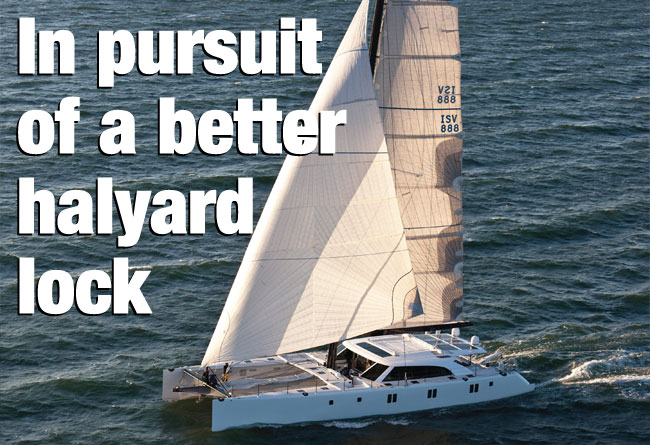

That was the task that Hall Spars set themselves...
Conventional halyard locks today require triplines to unlock, one for each locking halyard. In extreme cases this may mean six to eight locks, each with a tripline to go along with the halyard to be locked. Installing them is labour intensive and servicing the spaghetti of lines inside the mast is challenging. Also, conventional halyard locks, especially internally mounted versions, are not easy to service aloft.
About 10 years ago we asked ourselves: could a lock system be devised that eliminated the clutter of triplines and was simple to service aloft?
Concept
We’d have the answer if we could make a lock work like a ballpoint pen: hoist to lock, hoist again to unlock. No triplines required. It was a seductive concept but realising it with no history to fall back on first was another story: it required endless hours of designing, testing, redesigning, and testing again… before the elegant simplicity of the AutoLock system was eventually achieved.
Applications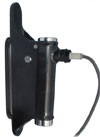 Today AutoLocks come in a wide variety of applications and sizes. The smallest have a Safe Working Load (SWL) of one ton. Our largest lock to date has a 45-ton SWL. All AutoLocks are also designed to allow use with standard-sized halyards at times when locks are not needed, as with headsails on inshore races on some TP52s and Mini Maxis.
Today AutoLocks come in a wide variety of applications and sizes. The smallest have a Safe Working Load (SWL) of one ton. Our largest lock to date has a 45-ton SWL. All AutoLocks are also designed to allow use with standard-sized halyards at times when locks are not needed, as with headsails on inshore races on some TP52s and Mini Maxis.
- External jib locks: External jib locks are attached with a pin to a stay-mounted bracket for optimum load alignment and easy removal for service.
- Hanging locks: These locks are masthead strop-mounted for use with spinnakers and Code Zeros.
- Block locks: These turn external halyard blocks for spinnakers into locking blocks. They are also used for Solent applications on offshore multihulls and boom reefing applications.
- Internal locks: These locks, which can be readily installed and removed in place through their own mounting hole, lock headsail and main halyards internally.
- Inner forestay locks for swift inner forestay installation and removal.
- Headboard cars: Headboard cars with AutoLock systems come in two versions:
1. Cars with locking on the track centreline and
2. Cars specifically created for boom furling applications with locking ramps outside the track to allow for the centreline boltrope.
Proximity switches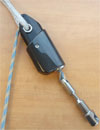 All halyard locks confront the same challenge: especially with the smaller stretchy halyards enabled by locks. Hoisting against the load of, say, a spinnaker on a breezy day, the halyard can stretch considerably before the bullet is lifted to the unlock position. Even with marked halyards, finding the point where the bullet moves into its unlock position can be frustrating guesswork. With proximity switches, a signal (audible, visible or both) indicating the lock is ready to release eliminates the guesswork. Most larger AutoLocks now have built-in provision for proximity switches.
All halyard locks confront the same challenge: especially with the smaller stretchy halyards enabled by locks. Hoisting against the load of, say, a spinnaker on a breezy day, the halyard can stretch considerably before the bullet is lifted to the unlock position. Even with marked halyards, finding the point where the bullet moves into its unlock position can be frustrating guesswork. With proximity switches, a signal (audible, visible or both) indicating the lock is ready to release eliminates the guesswork. Most larger AutoLocks now have built-in provision for proximity switches.
Time tested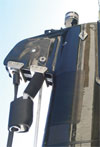 AutoLock applications are time tested with many locks now in their seventh year. A Gunboat 90 catamaran rig we
AutoLock applications are time tested with many locks now in their seventh year. A Gunboat 90 catamaran rig we
delivered in 2010 is a veritable AutoLock farm with block locks for spinnaker, Solent, staysail and boom reefs as well as a locking headboard car that features an additional lock in the headboard car toggle for the square-top main, allowing it to be hoisted into place from the deck (no going up in a chair to attach it to the car toggle).This rig has logged upwards of 800 routine hoist/locks on main, reefs, Solent and spinnaker over a four-year period. ‘They're ideal for our three-person crew,' reported Captain Tommy Gonzalez. ‘They are easy to use, work all the time, and show very little wear. The headboard car needs no more servicing than the mainsail sliders. The only things that ever needed replacing were one or two springs.’
Servicing
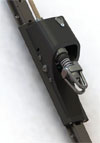 AutoLock mechanisms are very similar to winch systems. Both are susceptible to dust and salt and need periodic lubrication. With most AutoLocks a shot of WD-40 or similar lubricant every few months into the lock mouth suffices (just be prepared for the grime that might flow out!). Annual disassembly, inspection and lube is recommended, although there are scores of examples of AutoLocks seeing years of service without such inspections…
AutoLock mechanisms are very similar to winch systems. Both are susceptible to dust and salt and need periodic lubrication. With most AutoLocks a shot of WD-40 or similar lubricant every few months into the lock mouth suffices (just be prepared for the grime that might flow out!). Annual disassembly, inspection and lube is recommended, although there are scores of examples of AutoLocks seeing years of service without such inspections…
Latest developments
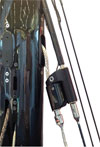 AutoLocks continue to see new applications. The latest is a headboard car with an integral AutoLock device for hoisting and locking the square-top that takes the Gunboat 90 system mentioned one step further by having both square-top and headboard car work off the same single halyard. Other applications will surely keep appearing. Meanwhile, Hall's carbon composite experts are continually finding areas of AutoLock weight savings where carbon is substituted for metal. Future locks with increasing amounts of carbon promise weight savings of a further 30-40%.
AutoLocks continue to see new applications. The latest is a headboard car with an integral AutoLock device for hoisting and locking the square-top that takes the Gunboat 90 system mentioned one step further by having both square-top and headboard car work off the same single halyard. Other applications will surely keep appearing. Meanwhile, Hall's carbon composite experts are continually finding areas of AutoLock weight savings where carbon is substituted for metal. Future locks with increasing amounts of carbon promise weight savings of a further 30-40%.
Click here for more information on Hall Spars »
We invite you to read on and find out for yourself why Seahorse is the most highly-rated source in the world for anyone who is serious about their racing.
To read on simply SIGN up NOW
Take advantage of our very best subscription offer or order a single copy of this issue of Seahorse.
Online at:
www.seahorse.co.uk/shop and use the code TECH20
Or for iPad simply download the Seahorse App at the iTunes store


